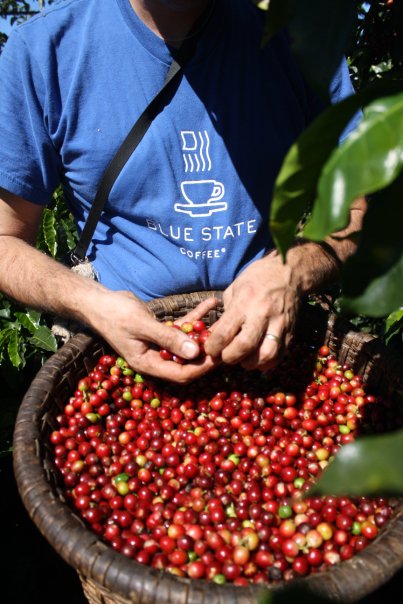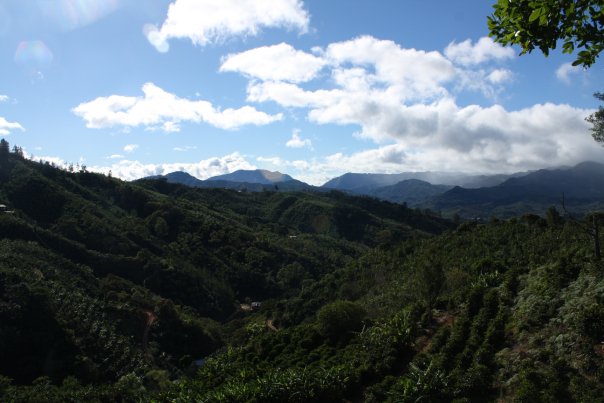Blue State Coffee has one coffee tree in Providence, R.I.: it may yield a few beans in a few years, enough for one shot of espresso. In other words, in the continental United States, coffee can't be a local product. It passes through many, many hands before reaching the barista, and some knowledge of coffee's origins is lost at each point along a complicated supply chain.
We serve Fair Trade coffee because the certification guarantees that farmers receive a fair price for their crop. No certification, however, can replace the experience of traveling to "origin." This is the coffee equivalent of the local food movement. By meeting with farmers, an economic relationship can become a meaningful personal partnership of farmer, barista and customer. Hence, "relationship coffee."
In February, two Blue State Coffee managers traveled to Costa Rica and Colombia to meet the men and women who grow, pick, sort and ship the coffees that we serve to our customers every day. Their goals were to develop professional and personal relationships with these farmers based on a shared commitment to artisan coffee and to study coffee as an agricultural product, as a crop subject to seasonality and intimately tied to the land.
In the mountainous Tarrazu region of Costa Rica, Alex and Benjamin met Carlos Garbanzo, whose aptly named El Alto farm is 5,750 feet above sea level. Our roaster, New Harvest, found and purchased Carlos' exceptional coffee through the Cup of Excellence program. Growing award-winning coffee requires paying attention to every detail of the process, including regular pruning and crop rotation. And nothing goes to waste: even the coffee fruit, once washed free from the bean, is composted and used for fertilizer.
In Colombia, at the Mesa de los Santos Farm, Benjamin and Alex observed firsthand the intricate process of picking coffee cherries. In an hour of picking, they collected just one tenth of what a seasoned picker could:

Because cherries ripen at different times, pickers must pass by each coffee tree three times, meticulously selecting only the ripe ones each time. All this before the coffee is milled, washed and dried, producing the green coffee beans to be roasted.
Alex and Benjamin returned home with an appreciation for the delicate, labor-intensive process of coffee production: the journey of "seed to cup." Now, the task is to tell this story to whoever will listen. For many customers, knowing the source of coffee can offer a more meaningful experience, a daily level of engagement normally reserved for artisan cheese or wine. If only for this reason, Alex, Benjamin and I are proud that our industry is moving in the direction of relationship coffee.
Or perhaps it's because we now have an excuse to return to Costa Rica every year.

